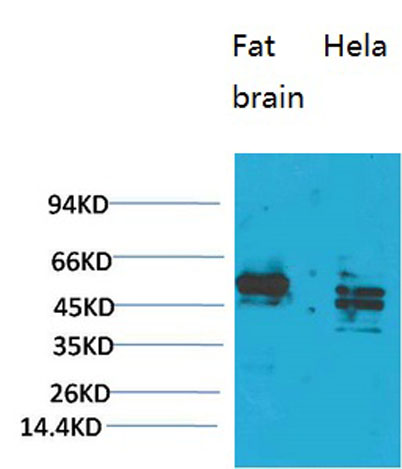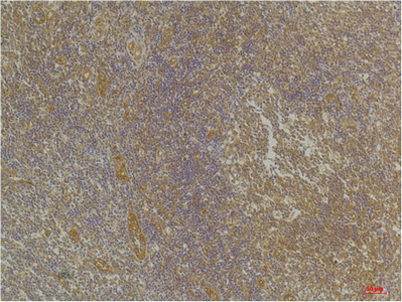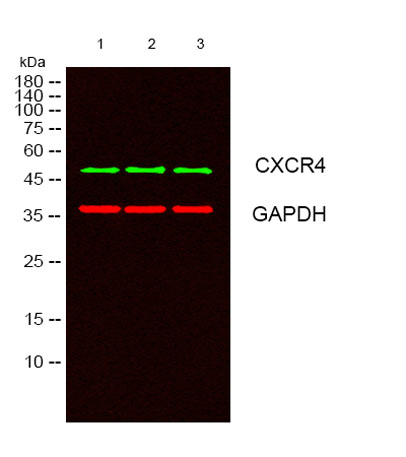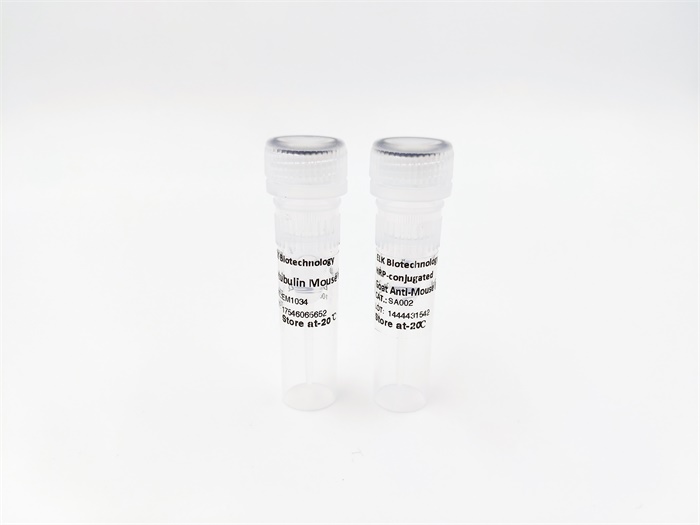

產(chǎn)品中心


Overview 文獻(xiàn)
-
 Western blot analysis of 1) Rat Brain Tissue, 2)Hela, with CXCR4 Rabbit pAb diluted at 1:2,000.
Western blot analysis of 1) Rat Brain Tissue, 2)Hela, with CXCR4 Rabbit pAb diluted at 1:2,000. -
 Immunohistochemical analysis of paraffin-embedded Human Breast Carcinoma using CXCR4Rabbit pAb diluted at 1:200.
Immunohistochemical analysis of paraffin-embedded Human Breast Carcinoma using CXCR4Rabbit pAb diluted at 1:200. -
 Immunohistochemical analysis of paraffin-embedded Human Tonsil Tissue using CXCR4Rabbit pAb diluted at 1:200.
Immunohistochemical analysis of paraffin-embedded Human Tonsil Tissue using CXCR4Rabbit pAb diluted at 1:200. -
 Western blot analysis of lysates from 1) Rat Brain Tissue, 2)Hela, 3) HEK293 cells, (Green) primary antibody was diluted at 1:1000, 4°over night, secondary antibody(cat:RS23920)was diluted at 1:10000, 37° 1hour. (Red) GAPDH Monoclonal Antibody(2B8) (cat:Y
Western blot analysis of lysates from 1) Rat Brain Tissue, 2)Hela, 3) HEK293 cells, (Green) primary antibody was diluted at 1:1000, 4°over night, secondary antibody(cat:RS23920)was diluted at 1:10000, 37° 1hour. (Red) GAPDH Monoclonal Antibody(2B8) (cat:Y
關(guān)閉
在線咨詢
Online consultation
-
在線咨詢
-
技術(shù)支持

關(guān)注微信公眾號(hào)


 下載說明 ①
下載說明 ①




